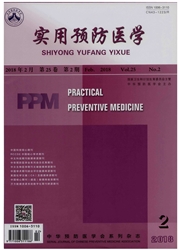

 中文摘要:
中文摘要:
目的分析1989-2009年我国疟疾流行变化趋势,探讨统计模型在疟疾发病预测中的应用。方法利用21年全国疟疾疫情报告,分析疟疾流行及变化规律;用ARIMA时间序列模型对疟疾发病率进行拟合及预测。结果 1989-2009年间疟疾的流行情况为,1989年发病率为12.56/10万,之后发病率呈急速下降趋势,1994年略有波动,小幅度回升,后持续下降。2001-2006年持续上升,2006年达到高峰,2007年后呈现持续迅速下降的趋势。ARIMA模型拟合结果较理想,其很好地拟合了既往时间段上的发病率序列,统计预测表明2010-2012年疟疾的发病率分别为1.19/10万、1.31/10万、1.43/10万。结论运用ARIMA时间序列模型对疟疾发病进行预测是可行的,该模型的拟合和预测效果较好。
 英文摘要:
英文摘要:
Objective To analyze the features of malaria prevalence in China from 1989 to 2009,and to explore the application of statistical models in malaria predictions. Methods ARIMA model was established based on the data of incidence rate of malaria from 1989 to 2009.The prognosticating precision was analyzed to evaluate the model and the incidence rates in the following years were predicted. Results The incidence rate of malaria was 12.56/100,000 in 1989 and then rapidly declined.It increased moderately in 1994 and then continuously decreased.The incidence rate kept increasing from 2001 and reached the highest level in 2006,then rapidly declined since 2007.ARMA model fitted well,the residuals were white noise sequences,and the prediction results showed that the predicted incidence by the model was consistent with the actual incidence.The incidence rates of malaria from 2010 to 2012 were predicted as 1.19/100,000,1.31/100,000,and 1.43/100,000,respectively. Conclusions The ARIMA model is acceptable to analyze the trends of incidence of malaria according to the result of fitness,and the model can be used to predict the trend.
 同期刊论文项目
同期刊论文项目
 同项目期刊论文
同项目期刊论文
 Reliability and Validity Testing of the SF-36 Questionnaire for the Evaluation of the Quality of Lif
Reliability and Validity Testing of the SF-36 Questionnaire for the Evaluation of the Quality of Lif 期刊信息
期刊信息
